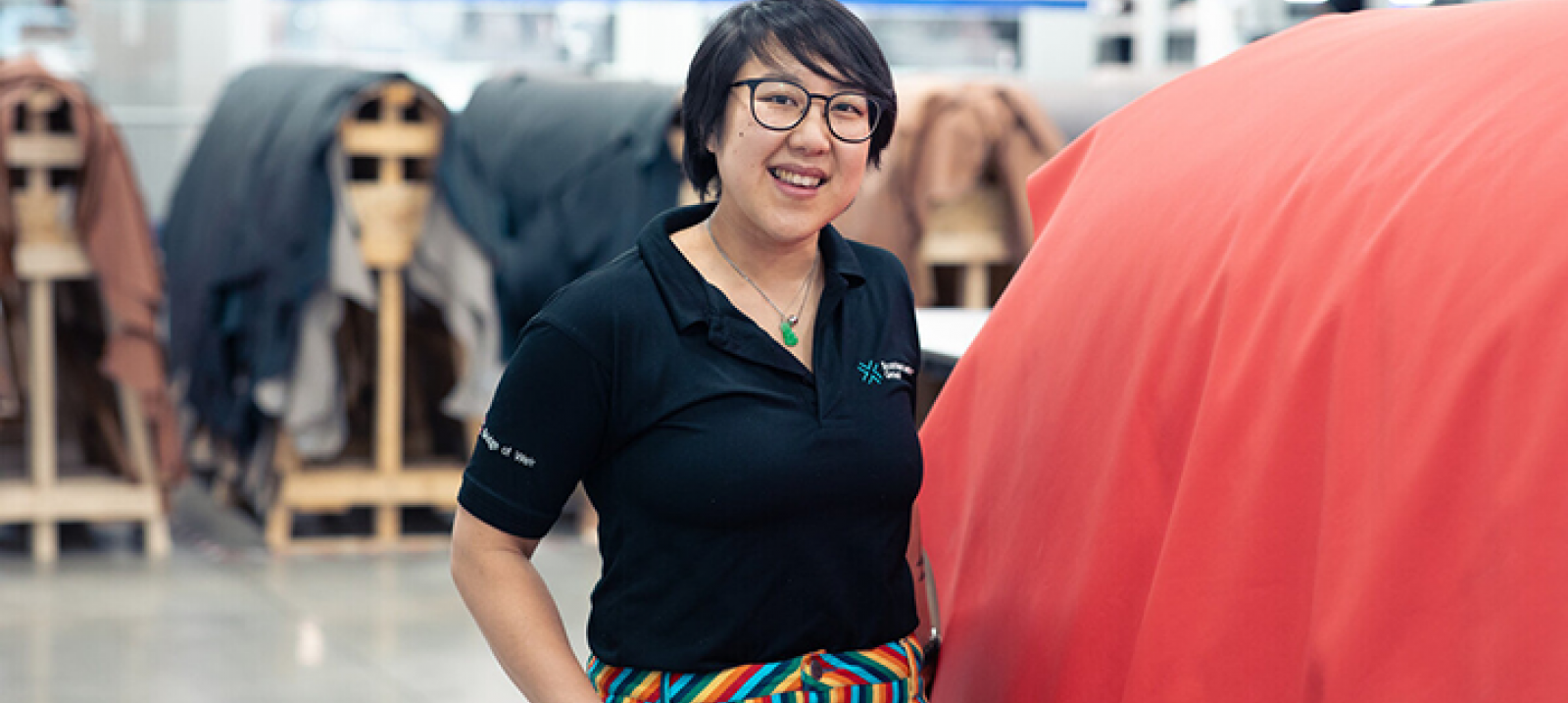
Car Design News interviews Design Manager, Debra Choong
Scottish leather company Bridge of Weir’s new studio in Warwick aims to push the boundaries of leather as an automotive interior material and connect its customers with luxury OEMs. The new studio follows the opening of the company’s ‘super tannery’ towards the end of 2023 at their Scottish headquarters. Car Design News caught up with Bridge of Weir’s Design Manager, Debra Choong, to get her thoughts on material innovation, the perception of leather and the future of luxury.
Car Design News: What does your role at Bridge of Weir entail? Talk us through a typical day.
Debra Choong: The main aspect of my role is to push the boundaries of traditional leather design. I dedicate a certain amount of my time to exploring innovative techniques, incorporating processes such as digital printing or CNC perforation in our processes to create unique textures, patterns and embellishments with our leather. The goal is to continually expand our design capabilities and offer customers novel and distinctive options.
I regularly engage with our internal product development and innovations teams, as well as suppliers, to discuss possibilities, experiment with different treatments and ensure that the envisioned finishes align with both the design aesthetic and technical requirements necessary for the automotive industry.
I also work closely with customers to understand their specific design needs and help translate their ideas into tangible leather solutions. This involves not only showcasing our existing products but also brainstorming and co-creating customised designs that align with their brand identity and vision.
CDN: How much space is there for material innovation with leather?
DC: One area of exploration lies in the sustainable processing of leather. As the industry places a greater emphasis on eco-friendly practices, there is an opportunity to develop and integrate materials that reduce the environmental impact of traditional leather production. For us, this includes the exploration of integrating more bio-based materials and innovating the tanning processes to minimise resource consumption and overall waste.
With the rise of smart technologies in vehicles, there’s potential for leather to become more than just a luxurious covering. Imagine leather surfaces with embedded sensors, heating or cooling elements, or even interactive displays seamlessly integrated into the material. This not only enhances the user experience but also aligns with the ongoing trend of technology-driven innovation in automotive design.
Also, exploring unconventional textures and finishes can add a new dimension to leather innovation. Incorporating tactile elements and unique patterns, or even introducing mixed-material designs, can redefine the aesthetic appeal of leather interiors.
CDN: You have been at Bridge of Weir for nearly a decade – how has the perception of leather in the design community changed?
DC: The rise of Veganism has contributed to the popularity of alternative materials. Synthetic and plant-based leather alternatives gained traction as consumers sought products that aligned with their ethical values. This shift has challenged the traditional perception of leather as the only luxurious and high-quality option, particularly for luxury leather automotive interiors.
This has contributed to misaligning arguments as Bridge of Weir leather is a highly sustainable material created from a byproduct of the meat industry and a waste stream that will be available as long as meat is consumed.
Consumers today are more interested in the transparency of supply chains and production processes, and this has led to the re-evaluation of traditional leather sources, with a demand for accountability in terms of animal welfare and environmental impact.
I see a shift towards embracing material imperfections as a defining element of modern luxury.
Within the use of leather in luxury automotive interiors, we have also seen consumer preferences become more diverse, with a greater emphasis on individuality and personal expression. We are responding with a wide range of colour matching, textures and finishes that hopefully challenge the idea that leather has previously been seen as a uniform and unchanging material.
It seems that the perception of leather over the last decade has shifted towards sustainability, ethical considerations and individuality. While traditional aspects of luxury and craftsmanship are still valued, there is a growing appreciation for the adaptability of leather to contemporary values and lifestyles.
CDN: Any predictions for the future of luxury?
DC: We will see a departure from traditional notions of perfection and opulence. Historically, luxury has been synonymous with expensive, flawless materials, representing the pinnacle of craftsmanship and exclusivity. However, as we navigate an era where sustainability is paramount, I see a shift towards embracing material imperfections as a defining element of modern luxury.
DC: Embracing the inherent irregularities and uniqueness of materials not only adds character to the products but also aligns with a more sustainable ethos. Imperfections can tell a story, making each piece distinctive and contributing to a sense of authenticity that resonates with the evolving preferences of conscious consumers.
This shift towards imperfection is closely tied to the growing importance of sustainability in the luxury market. As consumers become more environmentally conscious, there is an increasing demand for products that are not only aesthetically pleasing but also produced with minimal environmental impact. By incorporating materials with imperfections of utilising sustainable practices, luxury brands can contribute to a more sustainable industry while maintaining their commitment to quality and exclusivity.
Furthermore, embracing imperfections challenges designers to repurpose materials, and exploring unconventional textures and finishes. It adds a layer of uniqueness to each creation, making it more appealing to a consumer base that values individuality and a deeper connection to the products they choose to invest in.